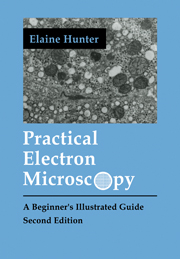Chapter 4 - Immunoelectron Microscopy Moïse Bendayan
Published online by Cambridge University Press: 05 June 2012
Summary
INTRODUCTION
In the early 1940s, immunocytochemistry was introduced for the immunodetection of antigens on tissue sections at the light microscope level. This innovative approach led to the development of various variants in cytochemical techniques with improved versatility and resolution and their extended application in all fields of biological research and diagnostic pathology. Adaptation of cytochemistry to the electron microscope level led to a second (with the immunoperoxidase techniques) and a third wave of interest (with the immunogold techniques), in the 1970s and 1980s respectively, with the application of these techniques to a large variety of research and diagnostic activities. The colloidal gold marker was first introduced in immunocytochemistry by Faulk and Taylor in 1971 for the detection of membrane antigens using colloidal gold-tagged immunoglobulins. Since then, colloidal gold has become the electron-dense marker of choice in cytochemistry because of the several and major advantages it displays when compared to other tracers such as peroxidase and ferritin. It can be prepared in very small sizes and, being electron dense, it is easily recognizable yielding labeling of very high resolution. It allows for accurate identification of the labeled structures without any masking effect. Being particulate, it can be quantitated, bringing an additional dimension to cytochemistry. It also offers the possibility of detection at the light microscope level. Preparation of colloidal gold-tagged molecules is a relatively easy task, and the procedure does not alter significantly the biological properties of the tagged molecule.
- Type
- Chapter
- Information
- Practical Electron MicroscopyA Beginner's Illustrated Guide, pp. 71 - 92Publisher: Cambridge University PressPrint publication year: 1993



